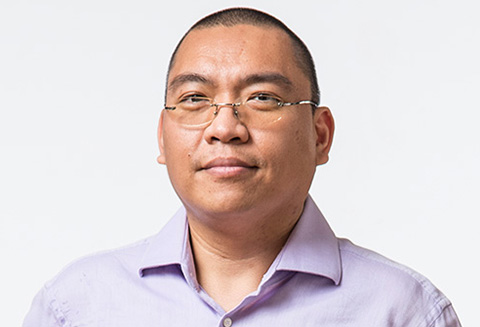New, less-invasive techniques for hernia repair

Most people associate the battle of the bulge with fighting excess weight. But sometimes, unexpected bulges that appear mostly in the stomach and groin areas can signal something very different: a potentially serious medical condition known as hernia.
More articles from this issue
“A hernia is an abnormal opening (rupture) in the body wall through which an organ or tissue can protrude. Internal organs, such as the intestine, bulging through the hernia, can develop into serious and potentially life threatening conditions if left untreated,” explains Dr. Yuri Novitsky, a Board-certified surgeon at the Center for Advanced Surgery at NewYork-Presbyterian Lawrence Hospital in Bronxville, and Director of the Columbia Hernia Center at NewYork-Presbyterian/Columbia University Irving Medical Center.
Hernias commonly occur in the groin region (inguinal) or belly button (umbilical), but also can happen anywhere in the abdominal wall, especially where a surgery had been performed previously (incisional). They are often caused by bending or lifting with poor form that leads to pressure to the weak areas of the body. But there are other causes as well. “The normal wear and tear of aging, prior surgeries, chronic coughing from COPD, being overweight or chronic constipation, and, in the case of women, pregnancy are all factors that can lead to hernia,” says Dr. Novitsky.
Symptoms often include a bulge, pressure, or dull ache especially after bending or lifting strenuously, often made worse by coughing or straining. “The risk here is that the intestines can become trapped in the hernia, causing extreme pain and even cutting off the blood supply to the intestines,” notes Dr. Novitsky. “This may be a surgical emergency that needs to be evaluated immediately.”
In most cases, men are more at risk for developing an inguinal hernia because during normal male development, the testicle descends leaving a passage that usually seals itself. “There are times that the passage does not close at all, or pressure can force the passage to open later in life, leading to inguinal hernia,” says Dr. Novitsky. “In women, pregnancy can increase pressure in the abdominal cavity and cause a tear at a weak point in the abdominal midline or navel, possibly causing types of hernias known as umbilical or ventral.”
Major types of treatment options
Some small hernias don’t have any symptoms at all, but should be evaluated and monitored by an experienced surgeon. Others can be temporarily pushed back until it can be corrected surgically. Traditional treatment options for hernia, however, have greatly expanded in recent years. “It has evolved to include not only traditional open surgery but now less invasive procedures — such as laparoscopic and robotic surgery, all of which we perform at NewYork-Presbyterian Lawrence,” says Dr. Novitsky. “Regardless of the method, hernia repair typically involves using a piece of mesh to reinforce the weakness in the abdominal wall.”
Open Repair: This type of approach is usually used for very large hernia defects as a part of abdominal wall reconstruction. The mesh is positioned between the muscles layers, to minimize complications and provide the most functional and durable repair.
Laparoscopic Surgery: Alternatively, a hernia may be repaired using a laparoscopic approach. The surgeon inserts small tubes called trocars through the abdominal wall at some distance from the hernia. A mesh prosthesis is then passed through one of the tubes into the abdomen and fixed to the undersurface of the abdominal wall with sutures and tacks. This technique is used for both small and large hernias of the abdomen.
Robotics: State-of-the-art robotic surgery is another minimally invasive surgical option at the Hospital. This robotic system features a magnified 3D high-definition vision system and special wristed instruments that bend and rotate far greater than the human wrist, enabling the doctor to operate with enhanced vision, precision, dexterity and control. Robotic repairs allow for improved mesh placement and less postoperative discomfort, compared to both open and laparoscopic approaches.
“Treatment options are evolving all the time,” says Dr. Novitsky. “We utilize materials that have been shown to induce less inflammation and reinforce surgical repairs in the safest way possible. With our expertise and experience, we continue to develop and implement even less invasive repairs to most patients. As the techniques and materials improve, so do the results — which means less pain, a faster return to daily life, and fewer recurrences.”
To find a physician at NewYork-Presbyterian Lawrence Hospital, please call 914-787-5000.






